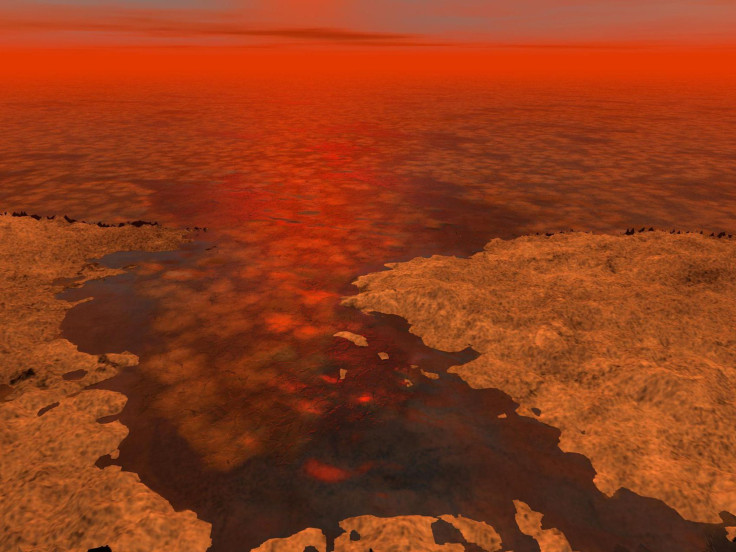Titan's Building Blocks Suggest Satellite May Have Begun Forming Before Saturn: Study

The building blocks of Titan, Saturn's largest moon, could be older than the planet itself, according to a new study by NASA and European Space Agency, or ESA.
The study, published this week in the Astrophysical Journal Letters, found strong evidence that nitrogen in Titan’s atmosphere was formed in conditions that were similar to the cold birthplace of ancient comets from the Oort cloud, a massive spherical cloud at the very edge of the solar system. The findings of the study contradict a theory that Titan's building blocks came into being within the warm disk of material that might have surrounded Saturn during the planet's formation.
“The main implication of this new research is that Titan's building blocks formed early in the solar system's history, in the cold disk of gas and dust that formed the sun,” NASA said in a statement. “This was also the birthplace of many comets, which retain a primitive, or largely unchanged, composition today.”
With nitrogen being the main ingredient in its atmosphere, icy Titan is often compared to an early version of Earth. The study suggests that Titan’s freezing atmosphere still contains information about its building blocks, which could help researchers better understand how the planet-sized moon might have formed.
In the study, the scientists examine the ratio of one particular nitrogen isotope, called nitrogen-14, to that of another isotope, called nitrogen-15, and conclude that the solar system is not old enough for this ratio to have changed significantly. According to the scientists, the ratio should remain nearly constant today as it was when Titan formed 4.6 billion years ago.
“When we looked closely at how this ratio could evolve with time, we found that it was impossible for it to change significantly,” Kathleen Mandt of Southwest Research Institute in San Antonio, Texas, and the study’s lead author, said in a statement. “Titan's atmosphere contains so much nitrogen that no process can significantly modify this tracer even given more than four billion years of solar system history.”
By studying the small amount of change in this isotope ratio, the researchers managed to compare Titan's original building blocks to other objects in the solar system. According to scientists, isotope ratios are considered valuable clues in solving the mysteries of the solar system’s formation.
While earlier studies have suggested that the nitrogen isotope ratio in Titan's original atmosphere was the same as the ratio found on Earth today, the new study shows that this ratio is different on Titan and Earth, meaning that the sources of Earth’s and Titan’s nitrogen must have been different.
“Some have suggested that meteorites brought nitrogen to Earth, or that nitrogen was captured directly from the disk of gas that formed the sun. This is an interesting puzzle for future investigations,” Mandt said.
© Copyright IBTimes 2024. All rights reserved.






















